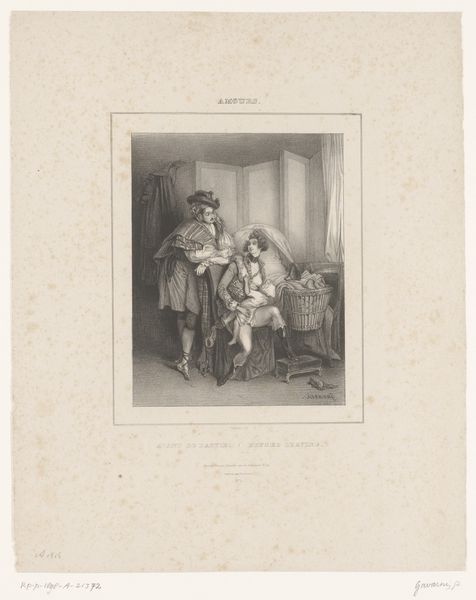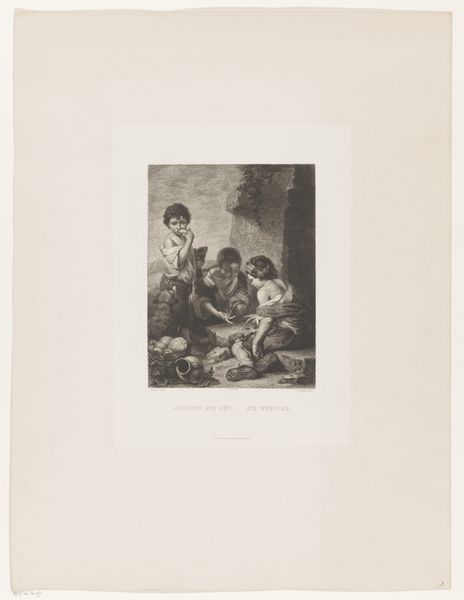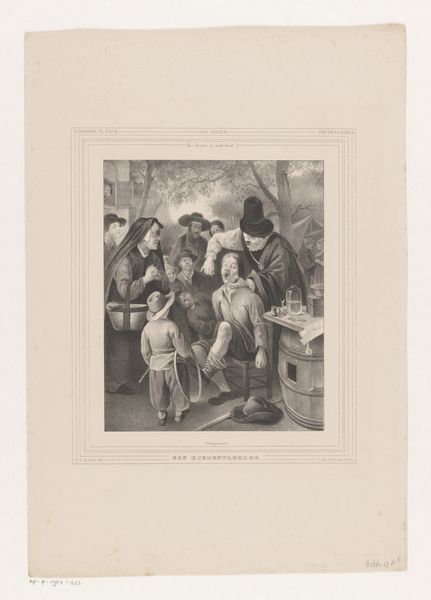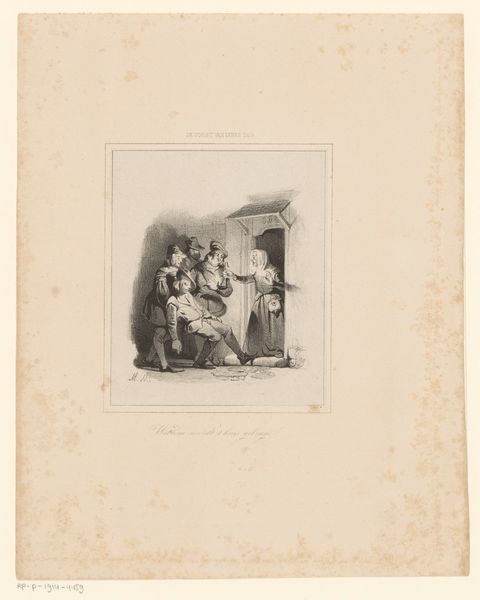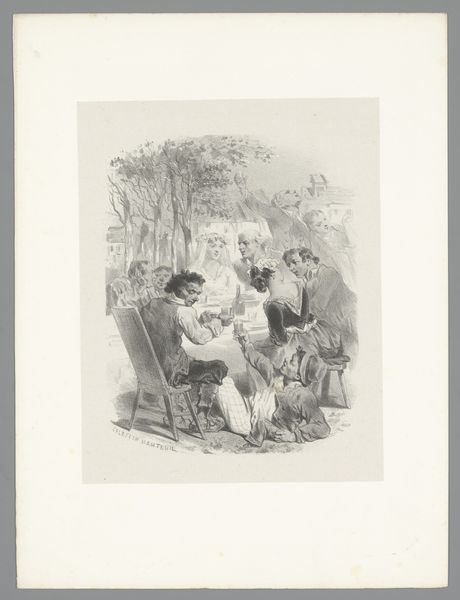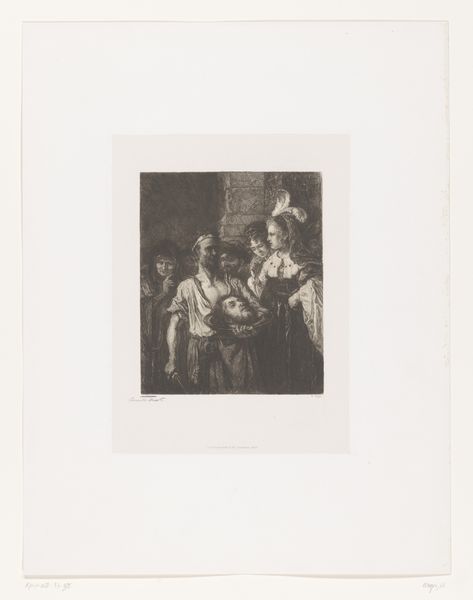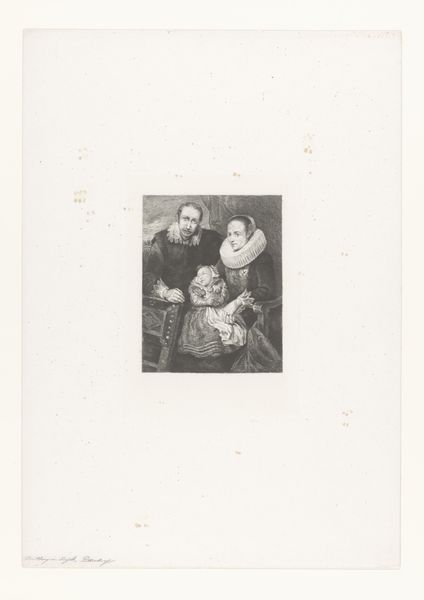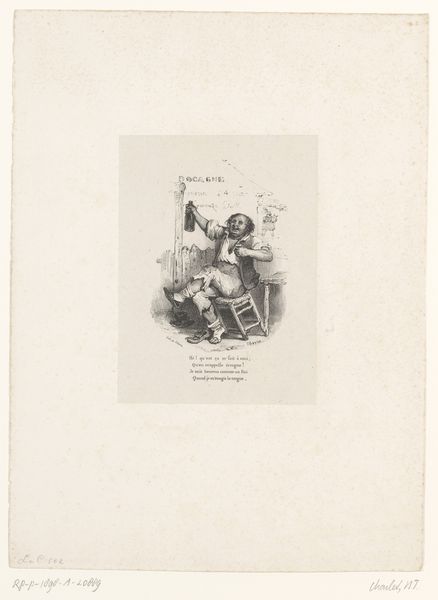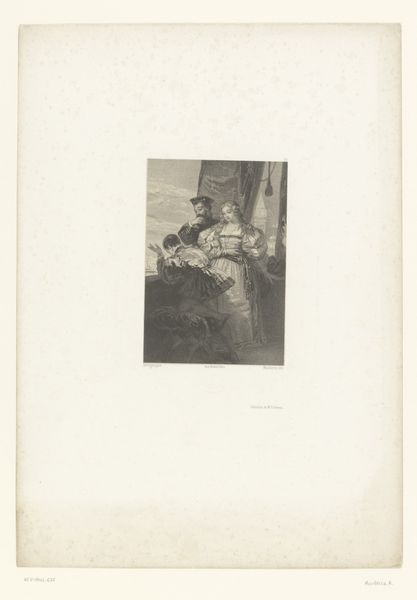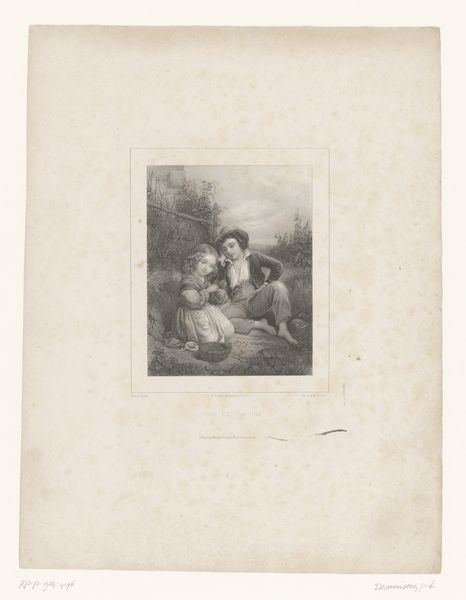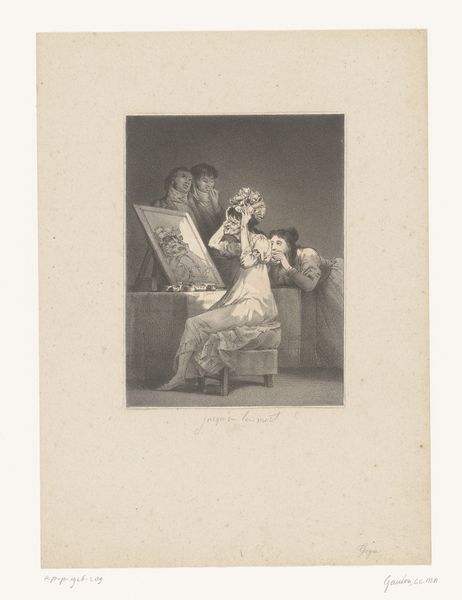
print, engraving
#
portrait
# print
#
group-portraits
#
romanticism
#
genre-painting
#
engraving
Dimensions: height 445 mm, width 350 mm
Copyright: Rijks Museum: Open Domain
Curator: Immediately, I'm drawn to the delicate balance and harmonic rendering achieved in this print. It suggests an atmosphere of private, yet profound experience, wouldn’t you agree? Editor: I do. Before us, we see Isaac Cornelis Elink Sterk's "Musicerend gezelschap," which translates to "Making Music Together." Created between approximately 1833 and 1863, it captures a scene of domestic musicality so characteristic of the Romantic period, an interesting perspective into bourgeois values. Curator: Notice how Sterk orchestrates our vision? The musician’s central placement draws the eye, and then our gaze moves upwards toward the vocalists behind him. The tight composition focuses our attention to the essential relationships between the figures and instrument in a shared performance. The details! Look closely at the ruffle collars; the play of shadows against the light source. The engraver truly showcases remarkable mastery in tone and line to achieve a palpable atmosphere in the print. Editor: Indeed, this piece serves as a commentary on the performative aspects of middle-class leisure, but let's not romanticize the scene entirely. One might observe that, within the socio-cultural history, music-making provided specific avenues for female self-expression within the domestic sphere while also reinforcing their gender roles. We can also appreciate how prints made artworks more broadly accessible to a growing, consuming public, a key shift of this period. Curator: Your reading brings such valuable historical insights into the subject, adding layers to our analysis of its significance! For instance, the seemingly intimate arrangement highlights more profoundly the intersection of personal and shared space; its delicate shading evokes the fleeting qualities of lived experience in the temporal cadence of musical composition. Editor: And yet, this intimate moment—perfected for visual dissemination. It raises questions about privacy, publicity, and how the Romantic period mediated these constructs. The circulation of prints facilitated cultural exchange as tastes broadened along social axes of the 19th century. This image speaks so beautifully about cultural accessibility—an open invitation. Curator: A most fitting end. Editor: Indeed, the engraving’s complex social and historical context invites us to imagine how this music shaped everyday experiences, influencing the cultural imagination of a transformative century.
Comments
No comments
Be the first to comment and join the conversation on the ultimate creative platform.
